I really enjoy reading books with strong female characters, but empowered women are not a recent phenomenon in stories.
 Female power was also venerated in ancient times, as portrayed by these kickass goddesses from around the world.
Female power was also venerated in ancient times, as portrayed by these kickass goddesses from around the world.
1) Kali
Kali often appears as a dark or angry goddess with blue skin, a garland of skulls and a knife, her tongue red with the blood of those she devours.
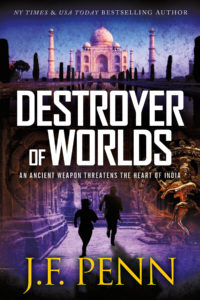 In each of her origin stories, she emerges through anger to destroy evil forces. In one tale, two demons attack the goddess Durga. Kali emerges from Durga's wrath and defeats the demons.
In each of her origin stories, she emerges through anger to destroy evil forces. In one tale, two demons attack the goddess Durga. Kali emerges from Durga's wrath and defeats the demons.
In another story, she fights an ancient demon, Raktabija. Each drop of his blood gives birth to a clone when it touches the ground.
During the battle, Kali cuts Raktabija and drinks his blood. She even eats his clones. The aggressive effect of his blood turns the goddess into a destroyer.
Yet despite her terrifying reputation, Kali is the ultimate protector against evil. Some even believe she will continue to exist after the end of the universe. In my thriller, Destroyer of Worlds, there is a pivotal scene set in a temple devoted to Kali …
2) Sekhmet
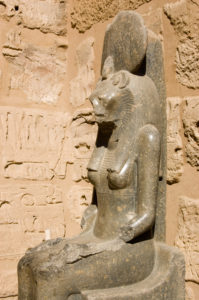
They don't get more powerful than the Egyptian deity, Sekhmet. Her name even translates as ‘Powerful One.'
Her main centre of worship lay in Memphis and the lioness-headed goddess represented The Destroyer. But strangely, for such a destructive figure, her priests were skilled doctors and healers worshipped her as their patroness. It seems the sender of plagues could also cure them.
But Sekhmet could also be fearsome. In one legend, Ra grew angry with mankind. They stopped following his laws and lost interest in justice, so he sent Sekhmet to punish them.
Her rampage decimated mankind until Ra decided things had gone far enough. She wouldn't listen, so consumed by blood lust, so Ra mixed beer with pomegranate juice. He poured the ‘blood' in front of her and Sekhmet got so drunk she promptly fell asleep. Her blood lust disappeared when she woke up 3 days later.
3) Ishtar
Ishtar ruled sex, power, fertility, love and war in ancient Mesopotamia. Her sex appeal was so great that when she descended into the underworld, all sexual activity ended on earth. Some myths claim that Ishtar entered the land of the dead to rescue her lover, Tammuz.
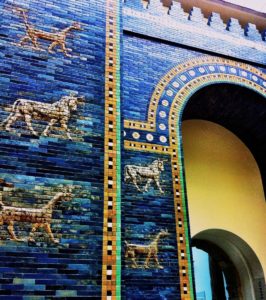
In the Epic of Gilgamesh, she proposes to the eponymous hero – but he refuses. She turns to her father, Anu, for help. Ishtar threatens to break open the doors of hell if he doesn't give her the Bull of Heaven. She made a similar threat to the gatekeeper of the underworld.
Anu gives her the Bull and she sends it after Gilgamesh. The hero kills it and Ishtar mourns the Bull with her courtesans. Ishtar is certainly a forceful goddess!
The Ishtar Gate, the entranceway to ancient Babylon, features as a key place in ARKANE thriller End of Days. It's now in the Pergamon Museum in central Berlin.
4) Hecate
Hecate presides over crossroads, entrances, witchcraft and sorcery in ancient Greek mythology.
A range of stories tries to explain her appearance in the Greek pantheon. In some tales, she was the only Titan to aid Zeus in his fight against the Titans. In others, she is an import from other cultures.
Eventually, her followers associated Hecate with the supernatural. Homeowners placed protective shrines to her at their doors to hold the wandering dead at bay.
But her most interesting trait is her appearance as a three-formed goddess. Scholars connect this with the new, half and full moons. She also ruled the triple kingdoms of earth, sky, and sea. Modern Wiccan practices associate her with the ‘crone’ period of a woman’s life.
5) Izanami-no-Mikoto
The Japanese goddess of both death and creation bore many children with her husband, Izanagi-no-Mikoto. Her name means ‘She who invites.' But she died in childbirth and descended into the Yomi (underworld). Her husband entered the shadowy lands of the dead but he couldn't persuade her to return with him.
Izanami ate the food of the underworld, so she couldn’t return to the world of the living. The tale recalls the Persephone legend of Greek mythology.
Izanagi couldn’t accept her answer and made a torch out of a hair comb. Seeing Izanami by firelight, his once-beautiful wife was now a rotting corpse. Izanagi fled but his wife pursued him. He sealed the Yomi shut with a giant boulder, locking Izanami in the underworld forever.
6) The Morrigan
The shape-shifting Celtic Goddess presided over war, fate, and death. As a patroness of revenge, magic, and witches, she also ruled rivers, lakes and other freshwater bodies.
Primarily a war goddess, the Morrigan took the form of a raven or crow. She flew over battlefields to spur on the troops. Her name translates into a range of meanings, including the Phantom Queen or the Queen of Demons.

Some tales call her the Washer at the Ford. She washes the clothes of men who will die in battle, choosing who will live and who will die.
In Deviance, a London Psychic crime thriller, the character of Magda Raven is an urban shaman. She channels the power of The Morrigan, calling on London's ravens to help her in time of need.
7) Papatūānuku
Papatūānuku is the Earth Mother in the Māori world. She represents the land. Mountain ranges sometimes represent the curves of her body.
According to the creation story, Papatūānuku and the sky father, Ranginui, bore many children. But their parents’ tight embrace crushed them. The gods pushed Papatūānuku and Ranginui apart so they could see the stars.
Different iwi (tribes) tell different stories. In some, the gods made humans directly from the earth. Try urban fantasy adventure Risen Gods to read more about Papatūānuku and Ranginui.
8) Tiamat
The Babylonian goddess is an ancient figure. She appears in the creation epic, the Enuma Elish, in which she forms the world with her consort, Apsu. The gods kill Apsu and Tiamat raises a demon army to fight them.
She loses the battle and Marduk, the new king of the gods, splits her corpse to create the seas and the sky.
In other stories, Tiamat is a primordial goddess of the ocean. She represents chaos as well as creation. She also takes the form of a giant sea dragon to fight her warring children.
9) Frigg
Wife of Odin, Frigg is the highest-ranking Aesir goddess in Norse mythology. Some scholars attribute tales of her deeds to Freya, a similar goddess in the pantheon.
The legends depict Frigg as a völva – a type of Viking magical practitioner. She reworks the web of fate to alter the course of destiny. Frigg also possesses the power to shapeshift into a falcon.
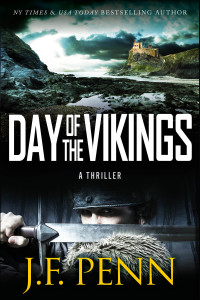
10) Nemesis
Known as the goddess of retribution, Nemesis actually acted as a form of cosmic justice. She punished the evildoer as well as anyone who didn't deserve their good fortune.
Far from dishing out punishment left and right, Nemesis judged every case within its individual context. She represented balance and could promise happiness or bring misery in equal measure.
For Nemesis, there could not be more of one than the other.
11) Ma’at
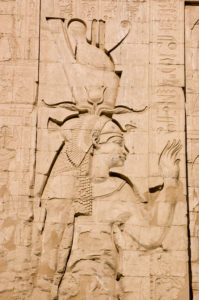
Ma’at performed a similar role in ancient Egypt, representing perfect order and balance. She's more of an idea but was sometimes personified as a goddess.
The ancient Egyptians believed the universe was essentially a rational place. But chaos existed before civilisation and disorder lurked at the edge of their world. Their society expected all citizens to defend Ma'at in order to hold chaos at bay.
When an Egyptian died, their soul entered the Hall of Ma'at. The judge, often Osiris, weighed their heart against Ma'at's feather. An unbalanced life made the heart heavier than the feather. The Devourer ate the heart unless Osiris threw it into a lake of fire. The soul gained eternal life if the heart balanced with the feather.
12) Mami Wata
Venerated throughout Africa and the African Atlantic, Mami Wata embodies the spirit of water. As a water deity, she sometimes appears as a mermaid. Much like the ocean, she can be volatile and dangerous, as well as protective and nurturing.
She brings good financial fortune and also governs water sprites known as mami watas and papi watas.
13) Spider Woman
Spider Woman is an important deity within the Navajo religion. When monsters threatened humans, she sent Child-Born-of-Water and Monster-Slayer to find the Sun God. He taught them how to destroy the monsters.
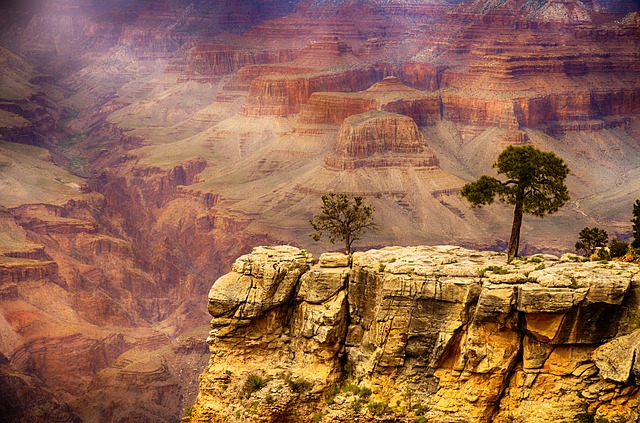
Spider Woman made her home on Spider Rock in Arizona. In one legend, a rival tribe chases a Navajo youth into her canyon. She drops a silken cord down into the valley and pulls him up to her home. He waits with Spider Woman until the enemy leaves, running home to tell his tribe of his narrow escape.
As a helper and benefactor to mankind, she taught humans how to weave and farm. She protects the innocent and fights to restore balance.
14) Minerva
Minerva is the Roman equivalent to Athena. She's the goddess of wisdom, as well as the arts and crafts. Her father Jupiter swallowed her mother after a prophecy that she would deliver a son that would destroy him.
Later, a terrible headache struck Jupiter down. The god Vulcan split his head open to give him some relief. It cured his headache and it also freed the fully grown (and fully armored) Minerva.
She told Perseus how to kill Medusa. The Gorgon turned men to stone if they looked at her. So Minerva advised Perseus to only look at Medusa’s reflection. He cut off Medusa's head and gave it to Minerva. She ended up mounting it on her shield, granting her the power to turn people to stone.
15) Hel
Daughter of Loki and the giantess Angrboda, Hel rules the realm of the dead in Norse mythology. She is alive from the waist up and dead from the waist down. The tales portray her as indifferent to the struggles of the gods.
Hel appears in the tale of Baldur. Loki causes his death through trickery and the beloved god journeys to the land of the dead. Hermod, son of Odin, travels to the underworld to bargain with Hel for Baldur’s release. It's an important mission since Baldur's death is a herald of Ragnarok – the Norse apocalypse.
Hel offers to release Baldur if every living creature in the cosmos weeps for him. Loki takes the form of a giantess and refuses to weep. The act condemns Baldur to remain with Hel.
Incidentally, during Ragnarok, Hel leads an army of the dead in a ship made from the fingernails of corpses. Cool!
All of these amazing goddesses are a testament to the diverse range of human beliefs.
Some groups still venerate a handful of these goddesses today, but other figures have faded into the written record as their civilisations fell or evolved. I love to use these myths as part of my stories!
